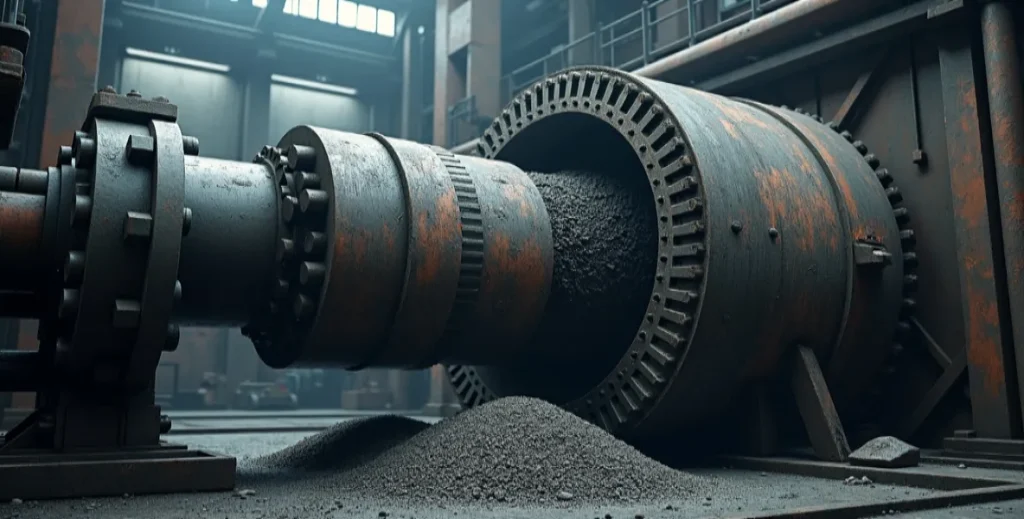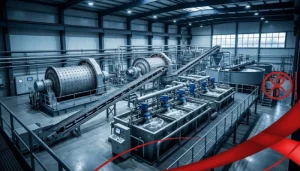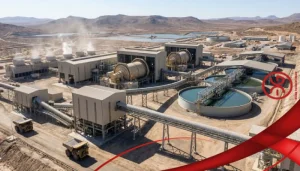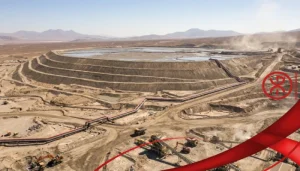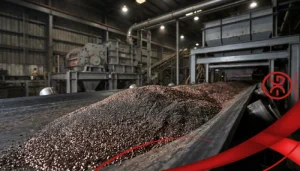Tumble mills are versatile grinding machines widely used in industries like mining, cement, ceramics, and chemical processing to reduce materials into fine powders. Known for their simple yet effective design, these mills rely on a rotating drum filled with grinding media to crush and grind materials through impact and attrition. This article from Alpha Grinding Media examines rotary mills, how they work, their applications, benefits, and detailed strategies for optimizing their performance in industrial grinding processes.
What Is a Tumble Mill?
A tumble mill is a cylindrical grinding device that uses a rotating drum filled with grinding media—such as steel or ceramic balls—to pulverize materials into smaller particles. The term “tumble mill” is often used interchangeably with ball mills or rod mills, but it broadly refers to any mill where the grinding media tumbles inside a rotating drum to achieve particle size reduction.
Key Components of a Tumble Mill
- Rotating Drum: A cylindrical chamber, typically lined with wear-resistant materials like rubber, steel, or ceramic, where grinding occurs.
- Grinding Media: Balls (steel, ceramic, or zirconia) or rods that crush and grind materials through impact and friction.
- Drive System: A motor that rotates the drum at controlled speeds, usually 20–40 RPM, depending on the mill’s size and application.
- Discharge System: Grates, screens, or overflow systems that allow fine particles to exit while retaining larger particles for further grinding.
Types of Tumble Mills
- Ball Mills: Use spherical grinding media (balls) for fine grinding, suitable for mining, cement, and ceramics.
- Rod Mills: Use cylindrical rods for coarser grinding, often in mineral processing.
- Autogenous (AG) Mills: Use the ore itself as the primary grinding medium, with minimal or no supplemental media.
- Semi-Autogenous (SAG) Mills: Combine ore and steel balls for efficient coarse grinding in large-scale mining.
Tumble mills are essential for industries requiring consistent particle size reduction, from coarse ore processing to fine powder production.
Applications of Tumble Mills
Tumble mills are used across a variety of industries for their ability to grind materials efficiently. Key applications include:
1. Mining Industry
Ore Processing: Tumble mills grind ores like gold, copper, or iron into fine particles for processes like flotation or leaching.
Example: A rod mill might process 1,000 tons/hour of copper ore, reducing particle sizes to 1–3 mm for further processing.
2. Cement Production
Clinker Grinding: Pulverizes cement clinker into fine powder for construction-grade cement.
Example: A ball mill grinds clinker to achieve a fineness of 3,500 cm²/g, ensuring high-quality cement.
3. Ceramics Industry
Powder Production: Grinds clay, silica, and additives into fine powders for tiles, pottery, or advanced ceramics like alumina.
Example: A tumble mill processes 500 kg of clay slurry, achieving particle sizes below 50 micrometers for ceramic glazes.
4. Chemical and Pharmaceutical Industries
Powder Blending: Grinds and mixes chemicals, pigments, or pharmaceutical compounds for uniform particle sizes.
Example: In pharmaceuticals, a tumble mill produces powders with particle sizes of 1–10 micrometers for tablet production.
5. Laboratory Applications
Material Testing: Small-scale tumble mills are used in labs to develop new materials or analyze grinding properties.
Example: A 1-liter tumble mill grinds experimental alloys to 100 micrometers for research purposes.
Tumble mills are adaptable to both large-scale industrial operations and small-scale laboratory settings.
Benefits of Tumble Mills
Tumble mills offer several advantages that make them a staple in grinding processes:
- Versatile Grinding: Suitable for both coarse and fine grinding, handling a wide range of materials from ores to chemicals.
- High Efficiency: Capable of reducing materials to micrometer sizes, ensuring high-quality output for downstream processes.
- Scalability: Available in sizes from small lab units (1–5 liters) to large industrial mills (up to 100 tons/hour).
- Durability: Robust designs with wear-resistant liners (e.g., rubber or manganese steel) ensure long-term reliability.
- Cost-Effectiveness: Low maintenance and reusable grinding media reduce operational costs over time.
These benefits make tumble mills an essential tool for industries requiring consistent and efficient grinding.
Conclusion
Tumble mills are essential for efficient grinding in industries like mining, cement, ceramics, and chemicals, offering versatility and high performance for particle size reduction. Their simple yet robust design allows them to handle a wide range of materials, from coarse ores to fine powders. By selecting the right grinding media, optimizing rotation speed, managing feed rates, and maintaining liners and media, you can maximize the efficiency and longevity of your tumble mill. Understanding the applications, benefits, and optimization techniques of tumble mills empowers you to achieve consistent, high-quality results in your grinding operations, whether you’re processing minerals or producing ceramic powders.
Frequently Asked Questions
1. What is the difference between a tumble mill and a SAG mill?
A tumble mill is a general term for mills using tumbling media (balls or rods) for grinding, including ball mills and rod mills. A SAG (semi-autogenous grinding) mill uses both ore and supplemental steel balls, primarily for coarse grinding in large-scale mining operations.
2. What materials can a tumble mill process?
Tumble mills can process ores (e.g., gold, copper, iron), cement clinker, ceramics, chemicals, pigments, and pharmaceutical compounds. The choice of media (steel, ceramic, or rods) depends on the material’s hardness and desired particle size.
3. How can I improve the efficiency of my tumble mill?
Optimize efficiency by using the right media size and material, operating at 60–80% of critical speed, maintaining consistent feed rates, and regularly inspecting liners and media for wear. Automation systems can further enhance performance.
4. How often should I replace the grinding media in a tumble mill?
Replace media every 500–1,000 hours, depending on material abrasiveness. For example, steel balls may wear faster with hard ores like iron, while ceramic balls last longer in chemical or ceramic applications. Regular monitoring is essential.

